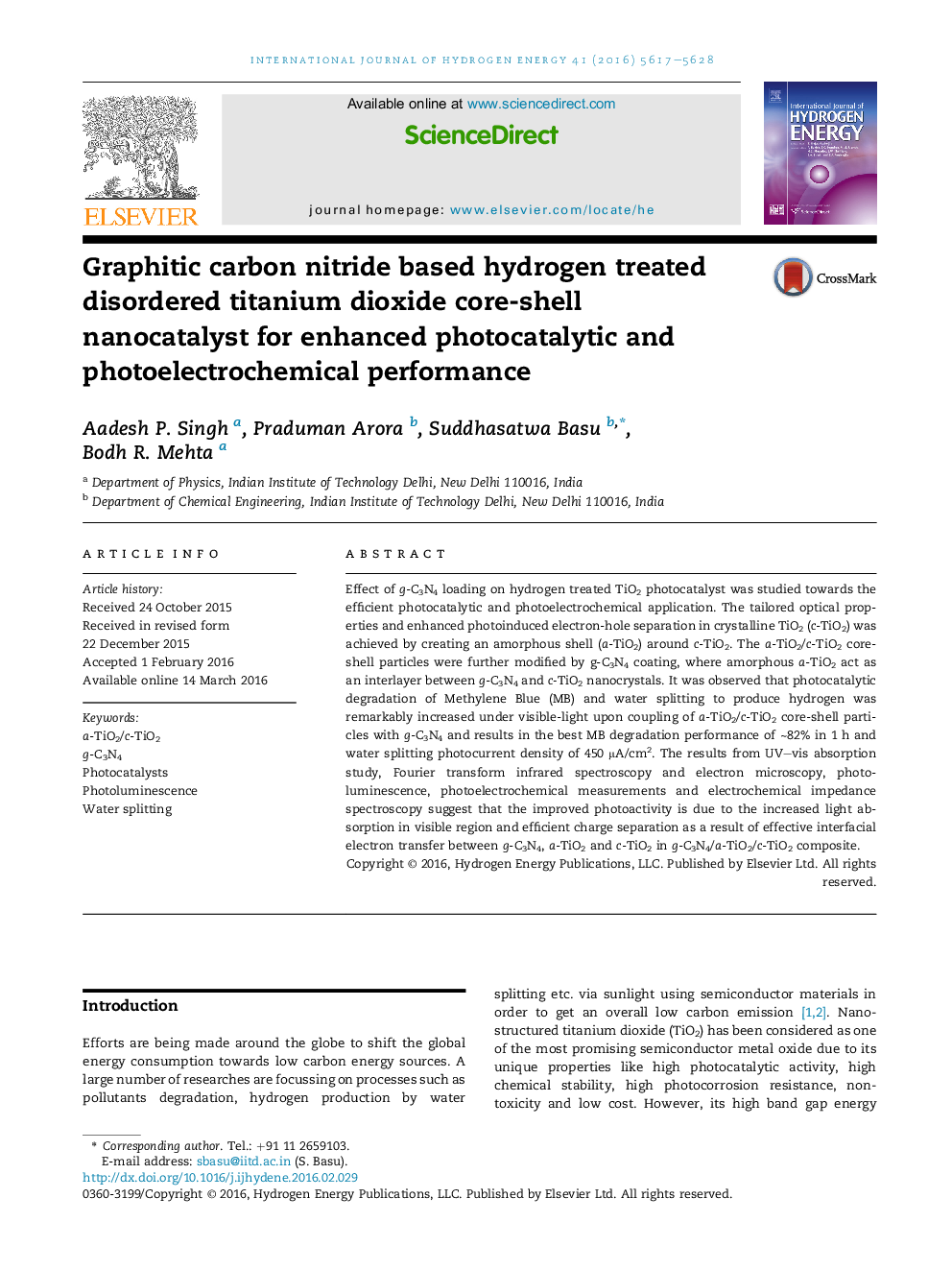| کد مقاله | کد نشریه | سال انتشار | مقاله انگلیسی | نسخه تمام متن |
|---|---|---|---|---|
| 1277674 | 1497412 | 2016 | 12 صفحه PDF | دانلود رایگان |
• H2 treated TiO2 results in formation of an amorphous shell around crystalline core.
• g-C3N4 provides a conductive interfacial connections retarding charge recombination.
• Modified heterostructure exhibited enhanced photoelectrochemical water splitting.
• Photocatalytic degradation of Methylene Blue was remarkably increased to 82% in 1 h.
Effect of g-C3N4 loading on hydrogen treated TiO2 photocatalyst was studied towards the efficient photocatalytic and photoelectrochemical application. The tailored optical properties and enhanced photoinduced electron-hole separation in crystalline TiO2 (c-TiO2) was achieved by creating an amorphous shell (a-TiO2) around c-TiO2. The a-TiO2/c-TiO2 core-shell particles were further modified by g-C3N4 coating, where amorphous a-TiO2 act as an interlayer between g-C3N4 and c-TiO2 nanocrystals. It was observed that photocatalytic degradation of Methylene Blue (MB) and water splitting to produce hydrogen was remarkably increased under visible-light upon coupling of a-TiO2/c-TiO2 core-shell particles with g-C3N4 and results in the best MB degradation performance of ∼82% in 1 h and water splitting photocurrent density of 450 μA/cm2. The results from UV–vis absorption study, Fourier transform infrared spectroscopy and electron microscopy, photoluminescence, photoelectrochemical measurements and electrochemical impedance spectroscopy suggest that the improved photoactivity is due to the increased light absorption in visible region and efficient charge separation as a result of effective interfacial electron transfer between g-C3N4, a-TiO2 and c-TiO2 in g-C3N4/a-TiO2/c-TiO2 composite.
Ternary heterostructured with g-C3N4/a-TiO2/c-TiO2 nanocomposite have been successfully prepared from the pristine TiO2 using three step modification including hydrogen treatment which shows significantly enhanced photocatalytic activity toward degradation of methyl blue and water splitting under visible-light irradiation to produce hydrogen.Figure optionsDownload as PowerPoint slide
Journal: International Journal of Hydrogen Energy - Volume 41, Issue 13, 13 April 2016, Pages 5617–5628
